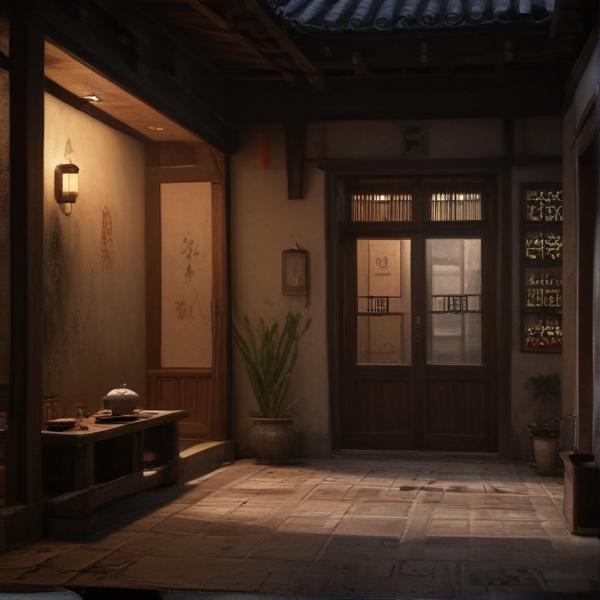基本信息 (Basic Information)
含义与用法 (Meanings & Usage)
中文核心释义 (Core Chinese Meaning): 古代及现代用于研磨墨汁的文房用具,称为“砚台”。
英文核心释义 (Core English Meaning): Inkstone; a traditional Chinese writing implement used to grind solid ink sticks into ink.
象形意义 / 为何这么写 (Pictographic Meaning / Writing Rationale)
文言文释义 (Classical Chinese Meaning)
与现代意义相近,皆指研磨墨的石器。Similar to modern meaning; both refer to a stone tool for grinding ink.
深入学习 (In-depth Study)
字源故事 (Origin Story)
字形演变 (Character Evolution)
常用词语和例句 (Common Words & Examples)
砚台 (inkstone)
这块砚台质地细腻,非常适合书法练习。
Eng: This inkstone has a fine texture, making it perfect for calligraphy practice.
文房四宝 (the Four Treasures of the Study (brush, ink, paper, and inkstone))
砚台是文房四宝之一,对中国文化有重要意义。
Eng: The inkstone is one of the Four Treasures of the Study and has great cultural significance in China.
相关成语 (Related Idioms)
相关成语信息待补充。Related idiom information pending.
多语言翻译 (核心释义) (Translations (Core Meaning))
- French: pierre à encre
- German: Tuschestein
- Spanish: piedra de tinta
- Italian: pietra d'inchiostro
- Portuguese: pedra de tinta
- Russian: тушечный камень
- Arabic: حجر الحبر
- Persian: سنگ جوهر
- Dutch: inktsteen
- Polish: kamień do tuszu
- Vietnamese: đá mài mực
- Ukrainian: тушечний камінь
视频学习资源 (Video Learning Resources)
通过以下链接在热门视频网站搜索 "砚" 的更多讲解:
Search for more explanations of "砚" on popular video sites:
- 在 Bilibili.com 搜索 "砚 字源 说文解字" (Search on Bilibili)
- 在 YouTube.com 搜索 "砚 character origin etymology" (Search on YouTube)
网络参考 (Web References for "砚") ()
网络内容摘要 (Web Content Summary):
砚(拼音:yàn)是一个与中国传统书房文化密切相关的汉字,核心含义是指“研磨墨汁用的石制器具”,即“砚台”。砚 (pinyin: yàn) primarily refers to an inkstone, a stone tool used for grinding ink, which is a symbol of traditional Chinese scholarly culture.
-
象形起源与字形结构:“砚”为形声字,左边“石”表示与石头有关,右边“见”为声旁,指明读音。古文字中,“砚”最初是指一种质地细腻、黑色、能盛水照影的石盘。在金属镜子发明前,古人甚至用砚盘来照影。 Pictographic origin and structure: "砚" is a phono-semantic compound character. The "石" radical means it relates to stone, and "见" indicates pronunciation. In ancient times, inkstones were sometimes used as mirrors before metal mirrors became common.
-
文化背景:砚是“文房四宝”(笔、墨、纸、砚)之一,在中国书画传统中地位重要。精美的砚台常被视为文人雅物和艺术品。 Cultural background: The inkstone is one of the “Four Treasures of the Study” (pen, ink, paper, inkstone), essential in Chinese calligraphy and painting and often treasured as an art object.
-
常见词语与成语:常见词有“砚台”(inkstone)、“笔砚”等。成语如“废寝忘食,舞文弄砚”(形容专注于写作、用功)中也会出现。 Common words & idioms: Typical words include “砚台” (inkstone) and “笔砚” (brush and inkstone). Idioms like “舞文弄砚” (be engrossed in writing) also use the character.
-
易混淆点:“砚”与“研”(yán,表示“研磨”、“研究”)容易混淆,但“砚”特指石砚用具。 Easily confused: "砚" (inkstone) is sometimes confused with "研" (grind; research), but "砚" specifically refers to the inkstone tool.
总之,“砚”不仅是日常书写用具,更富含历史和文化内涵。In summary, "砚" is not only a practical tool, but also rich in historical and cultural meaning.
汉字"砚"的起源、演变过程-汉字字源辞典
汉字字源辞典收录686条汉字词条,基本涵盖了常见汉字的字源解析,是汉字研究的必备工具。 ... 砚 yàn 金文; 小篆; 隶书 "砚"是一个形声字,左边的"石"字是个形旁,它表明,这个字的本义和石头有关;右边的"见"字是个声旁,是表明这个字的读音的
【砚,硯】的甲骨文金文篆文字形演变含义 - 甲骨文研究网 甲骨文密码字典 在线甲骨文字典研究 - 甲骨文研究网 甲骨文密码字典 在线甲骨文字典 ...
砚,籀文=(石材)+(见,看),造字本义:质地细腻、盛水后可以照影的黑色石盘。 在金属制的镜子出现之前古人用"砚"照影。篆文承续籀文字形。 -----附 文言版《说文解字》:砚,石滑也。从石見聲。 附 白话版《说文解字》:砚,研墨的石盘光滑可鉴。
更多图片 (砚 More Images) ()
